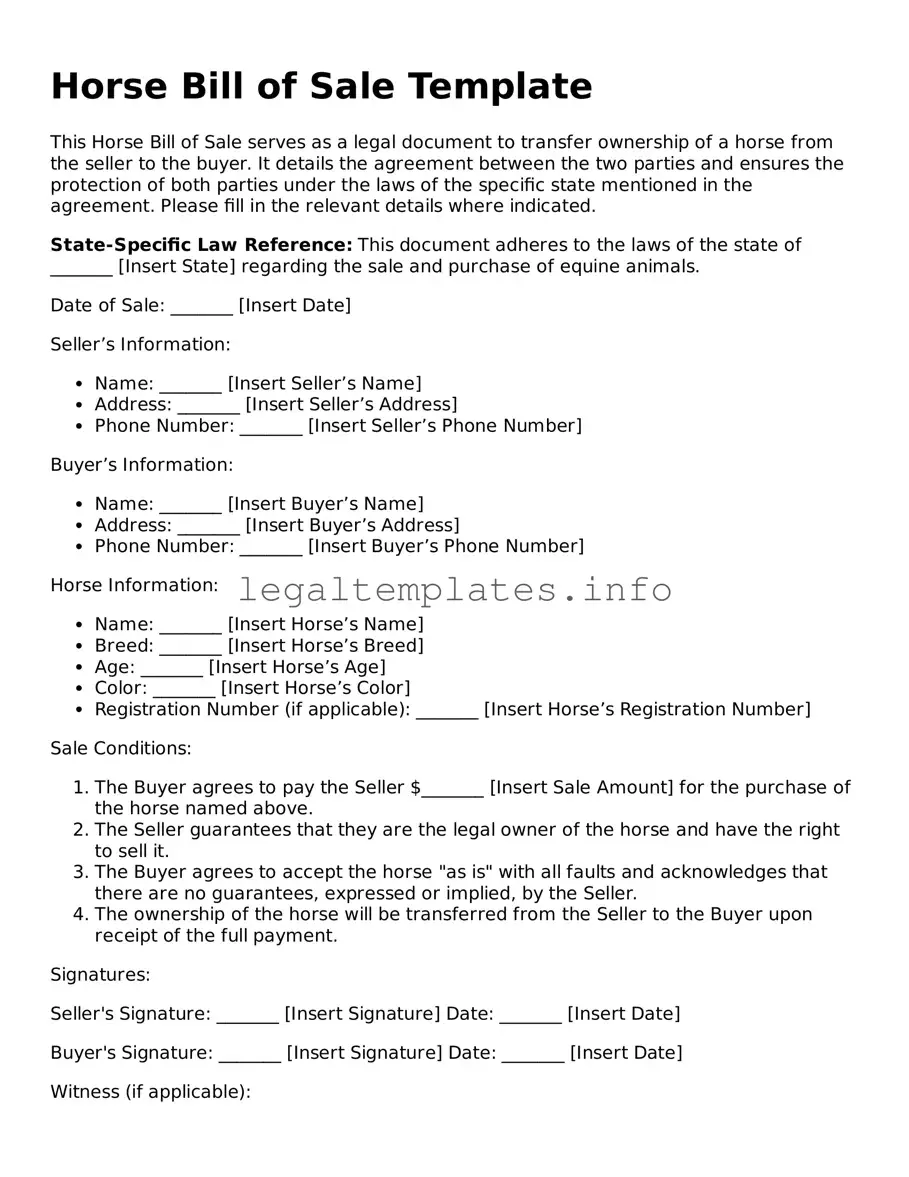What is a Horse Bill of Sale form?
A Horse Bill of Sale form is a legal document that records the sale or transfer of a horse from one party, the seller, to another, the buyer. It serves as a proof of purchase and outlines the agreement between the two parties, including details such as the date of sale, purchase price, and a description of the horse. This form also helps to ensure the buyer's ownership rights and can be used for registration, insurance, and other purposes where proof of ownership is required.
Why do I need a Horse Bill of Sale?
Having a Horse Bill of Sale is crucial for a few reasons. First, it legally documents the transaction, which helps in preventing misunderstandings or disputes regarding the sale's terms down the line. It also provides essential information that might be needed for tax reporting purposes. For the buyer, it's a proof of ownership, necessary for registering the horse, obtaining insurance, or when proving ownership in disputes. For the seller, it confirms that the responsibility for the horse has been transferred to the buyer, potentially releasing them from certain liabilities.
What information should be included in a Horse Bill of Sale?
A comprehensive Horse Bill of Sale should include the name and addresses of both the seller and the buyer, the sale date, and the purchase price. It should provide a detailed description of the horse, including breed, color, age, sex, registration information (if applicable), and any other identifying features or health details. The form should also spell out any warranties or agreements about the horse's condition, along with signatures from both parties to validate the agreement. Some forms also include terms regarding a trial period and stipulations for returning the horse under certain conditions.
Is a pre-purchase examination necessary before completing a Horse Bill of Sale?
While not legally required, a pre-purchase examination is highly recommended before finalizing a Horse Bill of Sale. This examination, typically conducted by a veterinarian, can assess the horse's health and suitability for the buyer's intended purposes. It helps the buyer make an informed decision and can be used to negotiate the sale terms, especially if any health issues or concerns are identified. Incorporating the outcome of this examination into the Bill of Sale can provide additional assurance and clarity for both parties.
Can a Horse Bill of Sale be used for donkeys or mules?
Yes, a Horse Bill of Sale can be adapted for use in the sale or transfer of donkeys or mules. While the specific details might differ, such as breed characteristics or purpose, the fundamental purpose of the form remains the same: to document and formalize the transaction. When using the form for donkeys or mules, it's essential to modify the description section to accurately reflect the animal being sold and ensure that all relevant information is included to protect both the buyer and the seller.
